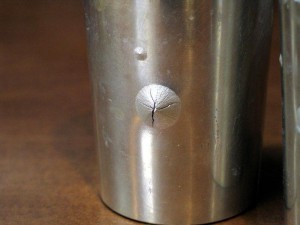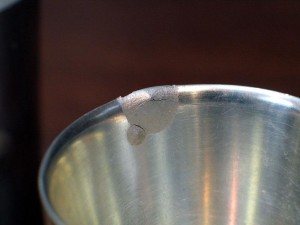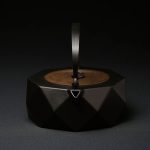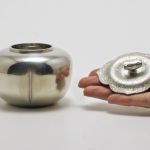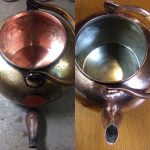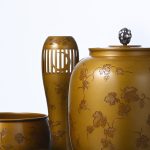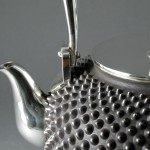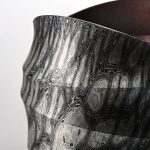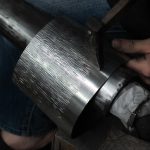Pewterware becomes more beautiful the more it is used. The following are some precautions and care instructions for using pewterware in your daily life for many years to come.
- Because of the low melting temperature, don’t expose the pewter ware to direct fire.
- Extremely cold temperatures can also deteriorate the metal, therefore don’t store it in a freezer.
- Avoid storing acidic substances in the pewter container for a prolonged time.
- Pewter ware needs no special attention other than regular wiping, and a soft cloth can, for example, clean fingerprints off the surface.
- Please note that the Ibushi (antique-colored) finish will peel off or scratch if rubbed too hard.
- Clean the pewter ware like any other ceramic dishes after use, using a soft sponge and a neutral detergent, then wiping it dry before putting it away.
(If it is difficult to remove the stubborn residue, try rubbing with a melamine sponge moistened with water.)
We offer repair and maintenance services for metal crafts regardless of whether they are made in the East or West, both old and new, from ourselves and others. For information on how to request repairs, please see “Regarding Repair of Metalcraft”.
The Pewter we use is alloy metal.(ex. 99% tin and 1% silver) Therefore the term ”Tin” might occasionally be used in place of “Pewter”.(…Read More)
Do not place it near a fire.
Pewter is a metal with a low melting point. If left near a cooking stove or brazier, it will melt in a matter of seconds. It melts at temperatures as low as 240°C. For reference, a cigarette burns at 800°C, so you can imagine Pewter is quite delicate. This low melting point is one of the characteristics of pewter. When placed near a fire, such as on a cooking stove, pewterware melts and disintegrates like sugar candy.
For example, we receive many inquiries about repairing melted and broken sake utensils at the beginning of each year in January. The reason why is specially related to the pewterware “Tosoki, a pitcher set for serving spiced sake served at New Year”. It is used for a few days after it is taken out of the warehouse to welcome the New Year. After washing, they are often left by the stove to dry out the moisture and dampness but, it will dissolve very quickly by the stove flame. Please take care.
*The product is not affected at lower temperatures, such as boiling water. Please use it with peace of mind.
Do not put it in the freezer.
Extremely low temperatures below freezing may rarely cause pewter to alter. Legend has it that this phenomenon was one of the causes of Napoleon’s army’s crushing defeat against the Russians during their expedition. In the extreme cold of the snowy mountains, the pewter buttons of his winter coat became altered and disintegrated. Here is an introduction to what is meant by “alteration”.
Tin(Pewter) is one of the elements with “allotropes”, which means that the elemental composition remains the same but the structure is very different, just as the carbon element changes from black coal to diamond. Tin has three isotopes, of which the change to “gray tin” is this alteration.
This alteration is manifested by prolonged exposure to cryogenic conditions. In actual vessels, this can rarely occur at temperatures below 15°C below freezing. Repeated experiments in household freezers show that the change is partially visible within a few months. It is difficult to generalize, as there is a large difference in the conditions of use, but care should be taken to avoid low temperatures, especially below freezing.
*If you cool it down quickly just before use in the fridge, this is not a problem.
Related Guides
- About the Characteristics and Properties of “Pewter”
- About the Materials Used in Pewter Products
- Pewterware Care
- Regarding Repair of Metalcraft



